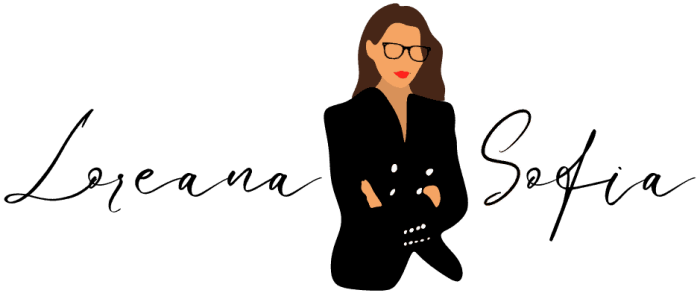These are the 10 tips for a healthy lifestyle that will help you greatly reduce the frequency and intensity of headaches. These techniques are straight out peer reviewed articles, no BS!

A terribly high percentage of women experience reoccurring debilitating headaches. So high in fact that I will save you from knowing that particular statistic.
As you might have guessed by this blog, I am one of those. So my interest and knowledge in this are rather extensive and I believe that I have a handle on it enough to be able to share some of my remedies with you.
I will not lie to you, I have seen doctors and I do have a prescription drug that I take in case my headache is very very hard to handle. These happen to be about once every couple of weeks.
However, between those times, these techniques that I will share go a long way. Therefore, the bulk of this blog post will be about understanding the major types of headaches and identifying which solution is best for you.
This blog post is all about the 10 tips for a healthy lifestyle that will greatly help you reduce the frequency and intensity of headaches!
10 Healthy Lifestyle Tips: Headache Edition
Before starting, I would like to note that if you suffer from chronic headaches, stop for a minute and check if you are in good standing with all other baselines of health.
Check that the amount of sleep and sunlight exposure, nutrition, exercise and social connections are all well established. Indeed, these all play a major part in proper mental health, physical health and performance.
Furthermore, you should speak to your doctor to discuss whether these solutions are suitable for you.
1. Understand what type headache you have
The first thing you need to understand is that there are different types of headaches. In fact, as we have different types of tissues in our heads, the different headaches arise when those different tissues are “under duress”.
It is important you understand which tissue is involved because different tissues require different remedies. You wouldn’t heal a scraped knee the same way you would heel a bleeding nose, amiright? Note that a type of headache might exist alone, and at other times many types will exist together. It’s a tricky business.
Type 1: Muscular headaches (tension headaches)
Muscle headaches generally arise around the top part of your head, around the region where you would put a headband (see picture below to get the idea). The most common spots are the forehead, the temples or the back of your head, and might extend further to the jaw or the neck.

Muscle headaches are rather common as they can arise for many different reasons: too much caffeine, stress, lack of sleep, low level viral infections…
As the name suggests it, it is the muscular system that is in pain. In fact, we have around 50 muscles in the head alone, which run parallel to the skull at different depth. When these muscles undergo excessive amount of constriction (or contraction), muscle headaches are produced.
Type of muscular headache
Tension headaches
A very common type of muscle headaches are called tension headaches. Chronic and/or psychological stress are generally the cause of these.
Type 2: Meningeal headaches (Traumatic head injury, hormonal headaches)
The meninges is a 3-layer tissue that lies between the brain and the skull (the brain isn’t only slushing around our skull 😂). It is an extremely durable and tough tissue, as its main purpose is to protect and provide extra stability to our brain and spinal cord (also known as the central nervous system)
In addition to the muscles, bones and brain, there are also a lot of vasculatures (blood vessels) in the head.
So, as you can imagine, everything is packed in very tightly up there, and there isn’t much room for movement. (Have you ever tried to put more clothing in a suitcase that’s about to explode? That’s a nice image for you.)
So when the blood vessels in your head dilate (for any reason), there creates added pressure between the brain and the meninges. And because it’s already packed pretty tightly, there is an impression of your brain being pushed up against the skull.
Note that the brain itself doesn’t have nociceptors (pain receptors). Therefore, it’s the nociceptors in the meninges that cause us to feel that intense pain and pressure… hence the name meningeal headaches.
The pain and pressure resulting from vasodilation is very different from the one resulting from muscle tension.
Type of meningeal headache
Traumatic brain injury
Headaches caused by traumatic brain injuries (TBI) are a common form of meningeal headaches.
In this case, traumatic brain injury isn’t only related to major accidents that cause irreparable brain damage. People who haven’t been in traumatic incidents can also have TBI headaches.
Indeed, any minor brain hitting is enough to experience these – whip lash being an example of this. These are often described as feeling stuffiness or fullness in the head.
Hormonal headaches
Hormonal headache are another form of meningeal headache, and these generally occur during the first week of the menstrual cycle.
Indeed, at this point are when the steroid hormones estrogen and progesterone are at their lowest. These combine to give rise to headache because of the ways they impact vasodilation and vasoconstriction.
Type 3: Neural headaches (migraine, cluster headaches)
Neural headaches are different from the previous two due to when we perceive the pain to originate. Indeed, neural headaches feel like they are coming from deep within the brain, generally behind the orbit of the eyes. (In the previous two, it can be described as a pain coming from the surface inwards.)
Neural headaches can be extremely painful and debilitating.
Neural headaches often originate in our Trigeminal nerve pathway. As suggested by the name, this nerve entry has three branches that extend to (1) the eyes, (2) the mandible and (3) the nose.
When this nerve becomes inflamed (or hyper-activated), it causes deep pain at the end-point of these branches. Most often, it is the eyes as this branch is the one that tends to be activated first.
Other symptoms of neural headaches also include very small pupils, a runny nose or teary eyes.
Type of neural headache
Migraines
Migraines are the most common form of neural headaches.
For a reason unrelated to the hormone cycle, migraines occur 3x more often in women than they do in men.
We will cover this a little more extensively in Remedy #3, but photophobia is a common trigger of migraines.
Cluster headaches
Cluster headaches are also a common form of neural headaches. They originate from deep within the head, though the pain tends to be unilateral.
As opposed to migraines, cluster headaches are 5x more prevalent in men than they are in women, and seem to be related to the circadian rhythm.
Additional symptoms of cluster headaches are droopy eyelids and waking up in the middle of the night with excrutiating pain.
Type 4: Inflammation-origin headaches (hormonal headaches)
Inflammation is a signalling mechanism that the body uses to indicate that something is wrong at some place in the body. While inflammation is a very efficient signal (hard to ignore or to miss), it isn’t very specific. Indeed, inflammation tends to be more widespread than the actual site of infection.
These headaches are often caused by inflammation in the sinus area (composed of the eyes, nose and mouth). The sinus area allows the passage of different fluids throughout the head area, allowing for active tissue to receive the necessary nourishment, blood and cerebral spinal fluids.
When the sinuses become infected, they also become clogged, thereby leading to headaches.
Since the face and the head are so heavy in vasculatures, any clogged passage will cause the inflammation to generalize and spread out. Therefore, inflammation headaches can cause issues in the previous tissues I discussed (muscle, meninges and nerves) and cause other types of headaches simultaneously.
Nutrition Coaching
Train hard. Eat well. Build your body one day at a time.
Train hard. Eat well.
Build your body one day at a time.
1-to-1 coaching. A sustainable nutrition plan. A lifetime of knowledge.
2. Understand how pain arises
Before moving forward, it is important for you to understand how pain arises.
All pain is going to be neural in origin. Neurons are the information messengers of the body, and pain is an information.
However, there is a distinction to be made among the biggest categories of neurons:
- Motor neurons control the contraction of muscles: the beating of your heart, your hands cupping a bowl of cereals, heavy lifting, etc.
- Sensory neurons will respond to events in the environment and the environment within your body: senses the difference between light and hard touch, how full or empty your stomach is, pain, etc.
- Modulatory neurons interpret the messages received from the motor and sensory neurones in a context-dependent way. In other words, it seems that the sensory information should cause a motor response: feeling pain in the palm of your hand will cause you to release the hot cup of tea you’re holding.
- Motor neurons: do you want to relax the muscles in the head, jaw or neck that are hyper-contracted
- Sensory neurons: do you want to change the sensory input itself?
- Modulatory neurons: do you want to cut off the communication between the motor and sensory neurons so that the muscles relax?
3. Remedy #1: Creatine
You probably know creatine as the supplement used to boost gym performance. However, aside from these muscle benefits, there is also a lot of data on creatine used in a clinical setting.
Indeed, the use of creatine for headaches relates to its function and support in communication between calcium and ATP systems. Calcium levels in cells are intimately associated with ATP use and synthesis, which are extremely important in proper cognitive function.
This is particularly interesting if your headache is a result of TBI – due to this injury, calcium homeostasis becomes dysregulated. Since the phosphorylated form of creatine can be stored in brain tissue, then the connection between calcium and ATP systems can be “saved”.
Indeed, research has found that there is a significant decrease in the frequency and intensity of headaches that people with TBI experience before and after the regular use of creatine – from 90% to 10-12%.
Want a free
MONTHLY HABIT TRACKER?
Set out small goals for yourself and see how your day-to-day improves with this Monthly Habit Tracker. Fill out the form below and have the Habit Tracker delivered straight to your inbox!
4. Remedy #2: Omega-3 fatty acids
Omega-3 fatty acids can greatly reduce the intensity and frequency of tension headaches, migraines and hormonal headaches. In fact, Omega-3s are considered to be non-steroidal anti-inflammatory drugs.
However, there is something to note about the quality of Omega-3 fatty acids. Indeed, there are three main Omega-3 fatty acids: Eicosapentaenoic acid (EPA), Docosahexaenoic acid (DHA) and alpha-linolenic acid (ALA) . The one of interest is the EPA, of which you want to be consuming at least 1g per day to receive headaches. It is also shown that intaking between 1g-3g of EPA can also positively affect one’s mood.
Part of the reason why Omega-3 fatty acids are beneficial is that they make up various parts of the cells in the brain and body. Indeed, Omega-3 fatty acids are important from early cognitive development to memory as adults. Brain cells containing higher levels of Omega-3 in their membrane also have stronger communication with other cells.
There is an important element to underline when it comes to this measure: the best outcomes occur not only from increasing Omega-3 fatty acids but by also decreasing linoleic acid, otherwise known as Omega-6 fatty acids. These are mostly found in seed oils, such as canola oil, sunflower oil or corn oil. This is partly due to the fact that Omega-6s increase inflammation via vasodilation and other pathways related to the inflammatory cytokine pathways.
Take note
Sources of EPA Omega-3 fatty acids
Here are some excellent sources of EPA Omega-3 fatty acids:
- Fatty Fish: Fatty fish such as salmon, mackerel, sardines, anchovies, and herring are excellent sources of EPA omega-3s. They are also rich in vitamins and minerals, making them a great addition to any healthy diet.
- Fish Oil Supplements: Fish oil supplements are a convenient way to increase your EPA Omega-3 intake. They are available in liquid and capsule form and should be third-party tested for purity and potency.
- Krill Oil: Krill oil is a source of EPA Omega-3s that is derived from small, shrimp-like crustaceans. It is often marketed as a more sustainable and eco-friendly alternative to fish oil supplements.
- Squid: Squid is a lesser-known source of EPA omega-3s, and can be grilled, fried, or added to stir-fries or stews.
- Algae-based Supplements: Algae-based supplements, such as those made from microalgae, are a vegetarian-friendly source of EPA Omega-3s. They are often marketed as a sustainable alternative to fish-based Omega-3 supplements.
- Oysters: Oysters are a rich source of EPA Omega-3s, as well as other nutrients such as zinc, iron, and vitamins B12 and C.
- Mussels: Mussels are another seafood source of EPA omega-3s that can be steamed, grilled, or added to stews and soups.
- Sea Bream: Sea bream is a species of fish that is high in EPA omega-3s, and is commonly consumed in Mediterranean and Asian cuisine.
It’s important to note that plant-based sources of omega-3s, such as flaxseeds and chia seeds, contain a different type of omega-3 fatty acid called alpha-linolenic acid (ALA), which the body must convert into EPA. However, this conversion is not very efficient, so eating fatty fish or taking EPA-rich fish oil supplements is the best way to increase your EPA intake.
Keep in mind that EPA content can vary depending on the species of fish and the way it is harvested and prepared
5. Remedy #3: Red-coloured light bulbs
For those who feel like bright lights can be a trigger for headaches, this one’s for you.
Photophobia occurs when someone feels pain and headache when exposed to bright natural or synthetic light.
It is a phenomenon that originates in the neurons of the eyes that respond most to bright lights (more specifically, the intrinsically photosensitive ganglion cells). These neurons connect to the lateral posterior (LP) nucleus of the thalamus.
The LP then communicates with the sensory cortex. More specifically, they connect to the neurons that are responsible for the detection of pressure pain at the level of the meninges and intracranial pressure.
So this means that for those who have photophobia, bright light is the actual trigger for the creation of pain at the level of the meninges as well as the onset of intracranial pressure.
People who suffer from photophobia, therefore, tend to dim lights or wear sunglasses or hats out in the sun.
A cost-effective solution is to switch to longer wavelength light bulbs, in the oranges or reds. Keeping some of these at hand is useful if you need to stay awake but experience photophobia.
Red-coloured light bulbs are also useful in limiting cortisol levels, which you want to keep low at night to improve sleep.
6. Remedy #4: Peppermint oil
This isn’t a hockey-pockey spiritual solution. This is scientifically proven so bare with me. You’d be surprised to know that some oils far outperform some NSAIDs.
Indeed, minty-type oils such as peppermint or menthol are the best. Applying some to your forehead or temples can significantly reduce the intensity of the pain.
Indeed, these products produce a cooling effect. This is because these oils have an impact on the sensory neurons at the level of the skin. These neurons can actually inhibit the pathways related to heat and pain while activating the cooling pathways.
Therefore, peppermint oil is a great way of solving tension headaches.
7. Remedy #5: Acupuncture
Acupuncture has been around for thousands of years, but only now are modern laboratories starting to further analyze its mechanism is alleviating headaches and other forms of pain.
Indeed, the needle insertions activate different sensory neurons in such a way that they can reduce inflammation and activity in certain muscles through the deactivation of sensory and/or motor pathways.
Simultaneously, acupuncture can activate other pathways related to relaxation as well as activate organs that activate anti-inflammatory pathways.
8. Remedy #6: Caffein
9. Remedy #7: Curcumin
Curcumin is a component derived from the turmeric root. It is widely known to have potent anti-inflammatory properties and is also a good treatment for migraines.
Indeed, curcumin inhibits the NO pathway, which causes vasodilation. In other words, curcumin causes vasoconstriction which can then reduce the feeling of intracranial pressure. Indeed, taking a daily dose of curcumin and combining it with EPA Omega-3 fatty acids seem to have the most significant improvements in the frequency and intensity of headaches, particularly migraines.
Take note
Too much curcumin
Curcumin has been shown to be safe for most people, up to level to 8g (8000mg) per day. However, taking that much is tightly discouraged.
Indeed, curcumin impinges on the synthesis of dihydrotestosterone (DHT), a hormone that is involved in many bodily functions such as libido or beard growth among men.
Also, curcumin inhibits cytochrome P450, associated with blood coagulation. So for those who are taking medication that are anticoagulant, you need to be cautious.
10. Remedy #7: Botox
Beyond the use of botox to keep us wrinkle-free, it can be used to relieve tension headaches.
Indeed, it was found that if botox was injected into the muscle, it can be beneficial for reducing headaches. More specifically, injecting botulinum neurotoxin is what helps.
As described above, tension headaches result from muscles being painfully constricted. This is controlled by neuromuscular neurons that release acetylcholine into muscles that make them contract.
Botulinum neurotoxin inhibits the part where the neuromuscular neurons communicate to the muscle, thereby making it impossible for the muscles to contract.
No contraction of the muscles means no tension headaches. Botox can therefore provide long-lasting headache relief.
I hope this article has helped you understand the root causes of your headache, as well as given you solutions to them!
This blog post was all about the 10 tips for a healthy lifestyle to help kick those headaches.
xx LS
Share this post







